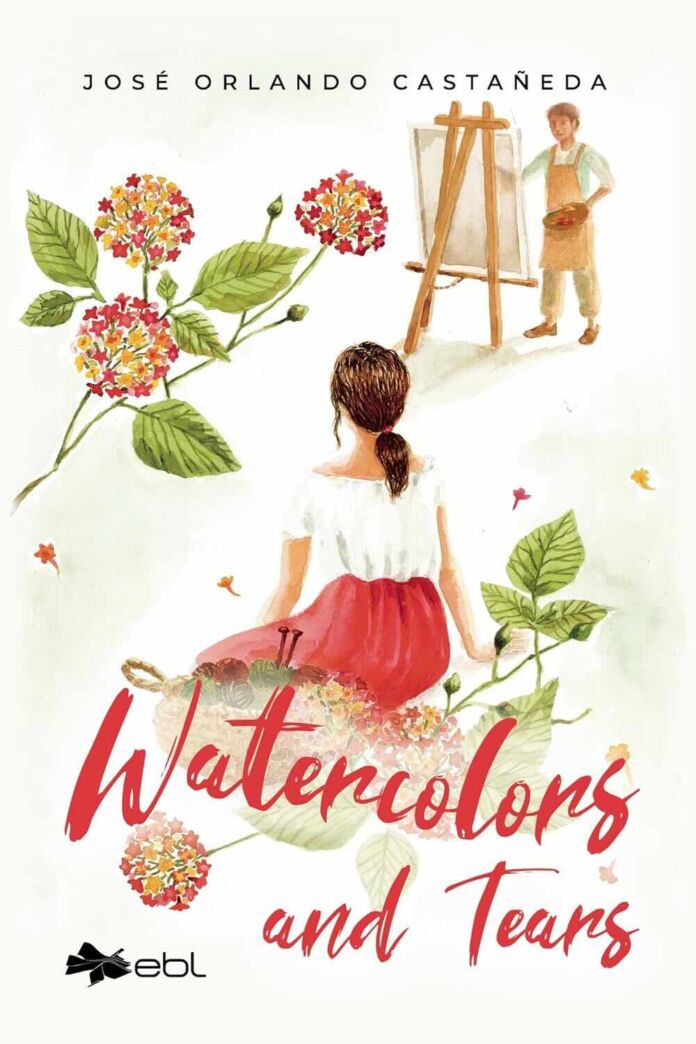A Vibrant Palette of Emotions
In the realm of contemporary romance, few novels capture the bittersweet essence of love and migration as vividly as José Orlando Castañeda’s “Watercolors and Tears.” This poignant tale weaves together the lives of Manuel and Elvira, a young Ecuadorian couple whose pursuit of a better life leads them on divergent paths across continents. Castañeda’s prose, much like Manuel’s watercolors, paints a rich tapestry of human emotions, cultural experiences, and the often-overlooked struggles of immigrants.
The Canvas of Migration
Brushstrokes of Hope and Hardship
The novel opens in the vibrant markets of Paute, Ecuador, where Manuel sells medicinal herbs and creates beautiful watercolors in his spare time. Castañeda’s vivid descriptions transport readers to this colorful world, rich with the scents of healing plants and the textures of Manuel’s paintings. As economic pressures mount, Manuel makes the difficult decision to emigrate to Port Chester, New York, leaving behind his wife Elvira and their children.
Castañeda masterfully portrays the complex emotions involved in such a life-altering choice:
- The hope for a better future
- The guilt of leaving loved ones behind
- The fear of the unknown
These universal themes resonate deeply, particularly for readers familiar with the immigrant experience.
A Sea of Tears
Elvira’s journey takes an unexpected turn when her attempt to join Manuel by sea ends in a harrowing shipwreck. This pivotal moment not only alters her plans but also serves as a powerful metaphor for the unpredictable nature of life and the resilience required to survive its storms. Castañeda’s description of the shipwreck is both terrifying and beautiful, showcasing his ability to find poetry even in moments of despair.
Madrid: A New Palette
The Nanny and the Bibliophile
Fate leads Elvira to Madrid, where she finds work as a nanny. It’s here that Castañeda introduces Antonio, the father of Elvira’s charges and a collector of antique books. Their initial connection through literature is one of the novel’s most charming elements. The author’s clever use of book passages as a means of communication between Elvira and Antonio is both romantic and intellectually stimulating.
This unique courtship allows Castañeda to:
- Showcase his own literary knowledge
- Explore themes of forbidden love and intellectual connection
- Highlight the power of words to bridge cultural and social divides
A Dance of Desire and Duty
As Elvira finds herself drawn to Antonio, Castañeda delves into the complexities of marital fidelity, cultural expectations, and personal desire. The tension between Elvira’s growing feelings for Antonio and her loyalty to Manuel creates a palpable sense of conflict that keeps readers engrossed.
Port Chester: A Different Hue
Manuel’s Solitary Canvas
While Elvira’s story unfolds in Madrid, Castañeda doesn’t neglect Manuel’s experiences in Port Chester. Through Manuel’s eyes, we witness the challenges faced by many immigrants:
- Language barriers
- Cultural isolation
- The constant struggle to make ends meet
Manuel finds solace in his watercolors and herbal remedies, using his art to express his longing for home and family. Castañeda’s descriptions of Manuel’s paintings are particularly evocative, allowing readers to visualize these works of art and the emotions they convey.
The Palette of Community
One of the novel’s strengths is its portrayal of the immigrant community in Port Chester. Castañeda introduces a cast of supporting characters who bring warmth and depth to Manuel’s story. From Neti, the motherly landlady, to Serino, the Italian-American contractor, each character adds a unique color to the narrative tapestry.
The Confluence of Colors
A Heartbreaking Return
When Elvira’s hopes for a future with Antonio are dashed, she makes the decision to reunite with Manuel in Port Chester. Castañeda handles this turning point with sensitivity, exploring the complexities of love, duty, and personal growth. The anticipation of Elvira and Manuel’s reunion builds steadily, only to be shattered by an unexpected tragedy.
The Legacy of Watercolors
In a poignant twist, it’s through Manuel’s watercolors that Elvira truly reconnects with her husband. Castañeda’s description of these paintings, infused with longing, love, and memories of home, is deeply moving. The watercolors serve as a bridge between past and present, between the couple’s shared history and their divergent experiences.
A Masterpiece of Emotion
Themes That Resonate
“Watercolors and Tears” explores several profound themes:
- The immigrant experience and its impact on families
- The nature of love and fidelity in the face of separation
- The power of art to express the inexpressible
- The unexpected paths life can take
Castañeda’s treatment of these themes is nuanced and thought-provoking, avoiding easy answers or moral judgments.
A Unique Voice in Romance Literature
While “Watercolors and Tears” is Castañeda’s debut novel, it demonstrates a maturity of style and depth of emotion that rivals more established authors in the genre. His ability to blend romance with social commentary and cultural exploration sets this work apart from typical romance novels.
Fans of authors like Isabel Allende or Junot Díaz, who explore themes of love and migration through a Latin American lens, will find much to appreciate in Castañeda’s work.
The Final Stroke
“Watercolors and Tears” is a captivating debut that lingers in the mind long after the final page is turned. Castañeda’s lyrical prose, complex characters, and exploration of universal themes create a reading experience that is both emotionally satisfying and intellectually stimulating.
For readers seeking a romance that goes beyond simple boy-meets-girl narratives, this novel offers a rich, multicultural perspective on love, loss, and the pursuit of dreams. Like the watercolors at its heart, “Watercolors and Tears” is a work of beauty born from the mingling of joy and sorrow, hope and despair.
José Orlando Castañeda has established himself as a promising new voice in contemporary romance, and readers will eagerly anticipate his future works. “Watercolors and Tears” is not just a love story; it’s a testament to the resilience of the human spirit and the enduring power of art to connect us across time and distance.





